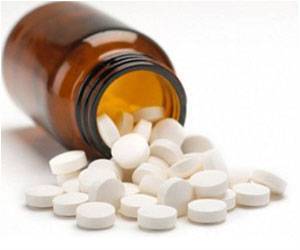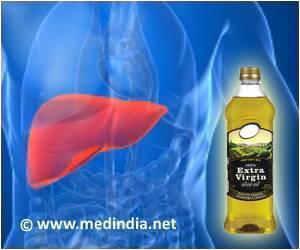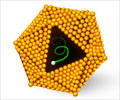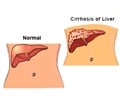Researchers at BIDMC and DFA has develped a postage stamp-sized, paper-based device could provide a simple and reliable way to monitor for liver damage at a cost of only pennies per test.

"Our device is designed to use a droplet of blood from a finger prick to deliver results in 15 minutes," says co-lead author Nira Pollock, MD, PhD, an infectious diseases doctor at BIDMC and the Associate Director of the Infectious Diseases Diagnostic Laboratory at Boston Children''s Hospital. "It could have significant implications around the world, particularly in developing nations where blood tests can be prohibitively expensive and the results can sometimes take weeks to return."
A research article detailing the development of the device appears in the Sept. 19 issue of Science Translational Medicine.
In developed countries, blood tests to monitor liver function are routine for patients with liver disease and those taking medications known to potentially cause liver injury. In the United States, it''s standard practice to test levels of two liver enzymes that are important markers for monitoring damage to liver cells - aspartate aminotransferase (AST) and alanine aminotransferase (ALT) - in at-risk patients on treatment for tuberculosis (TB) and HIV. In those patients, elevated AST and ALT levels can indicate drug-induced liver injury (DILI) and the potential need to change or stop important medications.
Two to 33 percent of patients on TB therapy can experience DILI, as can upwards of 13 percent of HIV patients on certain medications, particularly nevirapine, which is widely used in the developing world.
The gold standard for measurement of these liver enzymes is to draw blood from a vein and send it to a lab where the serum or plasma is separated out and tested on a large automated platform. While this automated testing is excellent, it is impractical and too expensive in many parts of the developing world. Consequently, "in many resource-limited settings, patients with TB and/or HIV receive minimal or no monitoring during treatment," the authors write.
Advertisement
The device - based in part on technology created in the lab of DFA founder and Harvard chemist George Whitesides, PhD - is constructed using layers of patterned paper and a plasma separation membrane. "A hole in the lamination allows for a fingerstick or pipetted drop of whole blood or serum to be applied to the plasma separation membrane." The blood then wicks into the layers of paper, and through the microfluidic channels travels to separate zones for testing AST and ALT.
Advertisement
The color changes, for example, from shades of blue to shades of pink, when increasing levels of AST are detected in the blood. "We specifically optimized the interpretable ranges for AST and ALT values (color readouts in the test zone) to correspond to the cutoffs currently used for clinical management decisions per TB treatment guidelines in the United States," write the authors.
In rigorous clinical tests using 223 whole blood and serum specimens from BIDMC, Pollock and Rolland''s paper-based test performed at greater than 90 percent accuracy compared against the gold standard automated platform test.
"Ultimately, this device could significantly impact patient care, particularly in resource-limited areas, and it could be also used to measure other types of liver damage, for example, that due to viral hepatitis," says Pollock. "This type of paper microfluidic platform is highly flexible so it can be used to construct a variety of other diagnostic assays as well," adds Rolland.
Diagnostics For All is currently developing a range of other tests for use in maternal and child health, infectious disease diagnosis and even agricultural tests, such as bovine (cow) pregnancy, for rural farmers in Africa.
Additionally, the device could be used as a "triage test" in developed or developing nations to quickly and inexpensively rule out the need for automated laboratory testing. For example, if blood tested with the device shows that the liver enzymes fall below a certain threshold, more expensive testing could be avoided, saving healthcare dollars and clinical resources.
"The next stage for the device is to test it in the field," says Pollock. "We are working with the global health nonprofit PATH in Seattle, WA for a preliminary field study of the paper-based test in Ho Chi Minh City, Vietnam. The field study is a collaboration with the BIDMC-based Harvard Medical School AIDS Initiative in Vietnam and the Hospital of Tropical Diseases in Ho Chi Minh City. We will evaluate the performance of the test for fingerstick testing of 600 patients from the Hospital of Tropical Diseases HIV clinic."
In addition to Pollock and Rolland, co-authors include: Patrick D. Beattie, Shailendra Kumar, PhD, Sidhartha Jain, MS, Vicki L. Wong, and Una S. Ryan, OBE, PhD, DSc, of Diagnostics For All; Farzad Noubary, PhD, of the Department of General Medicine/Division of Infectious Diseases at Massachusetts General Hospital, Rebecca A. Pohlmann, MD of Beth Israel Deaconess Medical Center (Department of Pathology), and, as senior author, George M. Whitesides, PhD, of Harvard University.
This work was supported in part by a grant from the Department of Defense/Center for Integration of Medicine and Innovative Technology (CIMIT). Pollock is supported by an NIH K23 grant. Rolland, Kumar, Beattie, Jain and Ryan are supported by a Harvard subcontract of a grant from the Bill & Melinda Gates Foundation.
Beth Israel Deaconess Medical Center is a patient care, teaching and research affiliate of Harvard Medical School, and consistently ranks among the top four in National Institutes of Health funding among independent hospitals nationwide. BIDMC is clinically affiliated with the Joslin Diabetes Center and is a research partner of Dana-Farber/Harvard Cancer Center. BIDMC is the official hospital of the Boston Red Sox.
Source-Newswise















